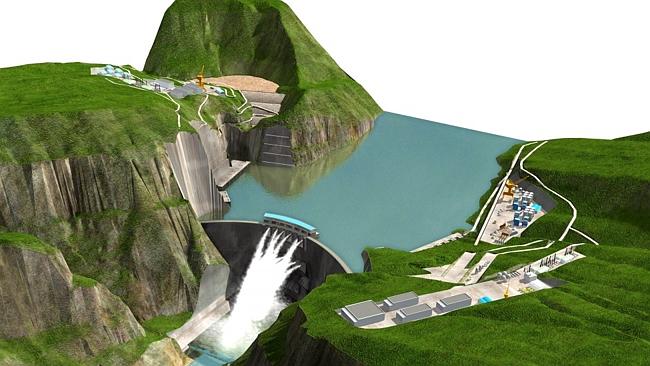Giant prehistoric landslide dammed China’s Yangtze River and it could happen again
SCIENCE has revealed a gigantic prehistoric landslide once dammed China’s Yangtze River and if it happened again, there would be catastrophe.

A STUDY has revealed a supersized prehistoric landslide once blocked China’s mighty Yangtze River and it could happen again, but this time with devastating consequences.
Researchers at the University of Nottingham Ningbo China are the first to discover that 30,000 years ago a giant landslide triggered by a large earthquake, not unlike those seen recently in the area, would have been one of the biggest ever recorded and mammoth enough to dam the river.
Their evidence suggests the lump of land caused a 200m-wide dam and effectively created a “pond” that spanned 100km in length. Today, the river is in full flow, which means the dam would have eventually broken, sending vast quantities of water rushing at high speed into the valley below and cause widespread flooding.
At the time, the area, which is now near the present day town of Qiaojia in China’s Yunnan province, would have been uninhabited by humans but today it is home to 500,000 people.
Being a seismically active area, if history repeats itself the result would be far more catastrophic.
The study’s lead author, Professor Higgitt, said: “The natural damming of rivers by landslides is a significant hazard in the seismically active, mountainous terrain of Southwest China.
“The findings of this study are significant not only due to the huge dimensions of the landslide but because of the enormous area impounded by the dam and recognition that a river as large as the Yangtze has been — and can be — impacted by persistent river-blocking landslides.”

Qiaojia is now downstream of the site of a new man-made Beihetan Dam, which will be the third largest hydropower project in the world. While the plans have the intention to benefit the area and use natural resource for energy, it may be nature itself that could be its worst enemy.
“The presence of the new reservoir introduces the additional hazard of earthquake-generated landslides causing displacement waves, where landslides fall into a reservoir and cause flooding over a dam, often with devastating consequences to the surrounding area.
“The need for vigilance in assessing seismic and slope stability hazards in the area is crucial,” said Higgitt.



